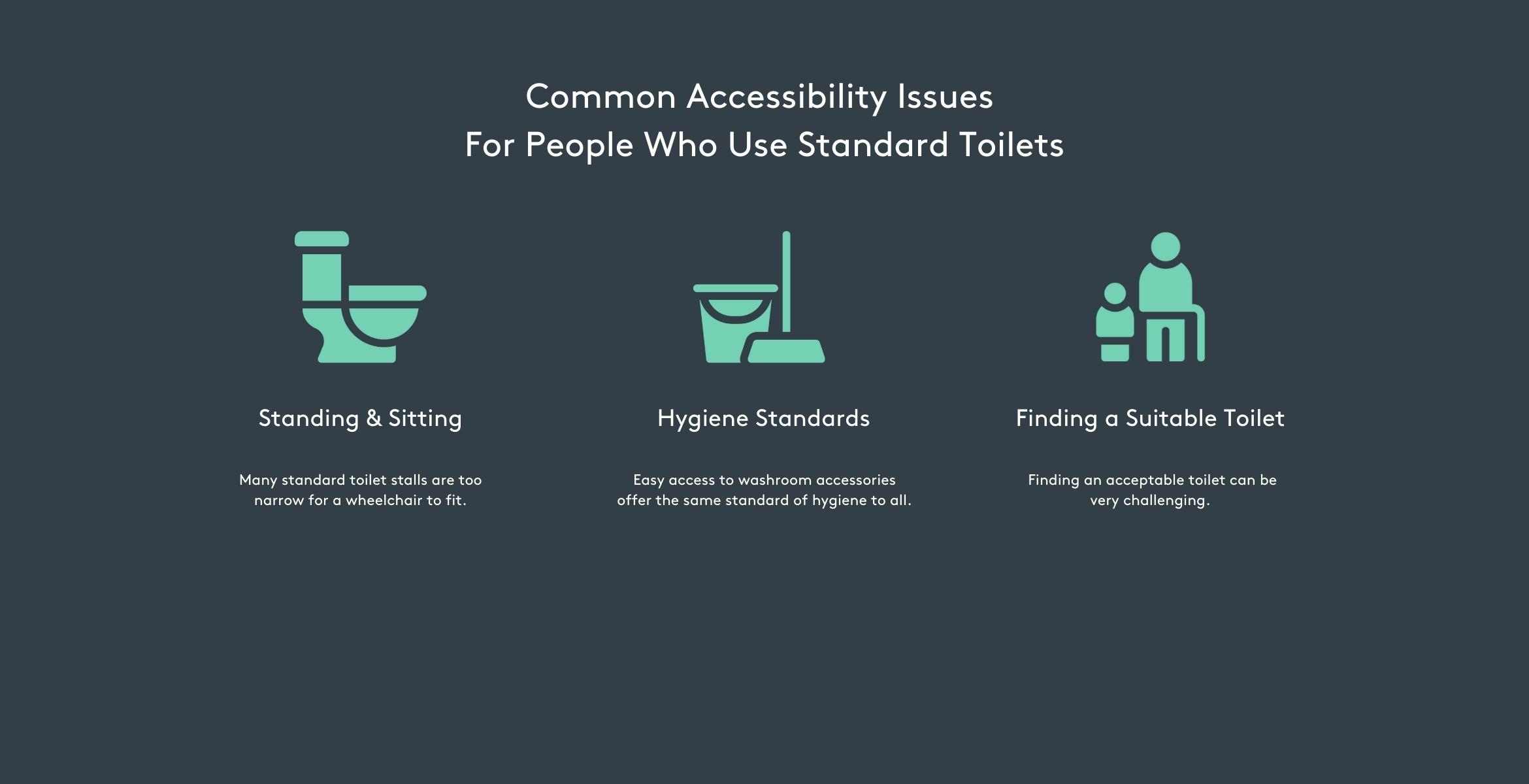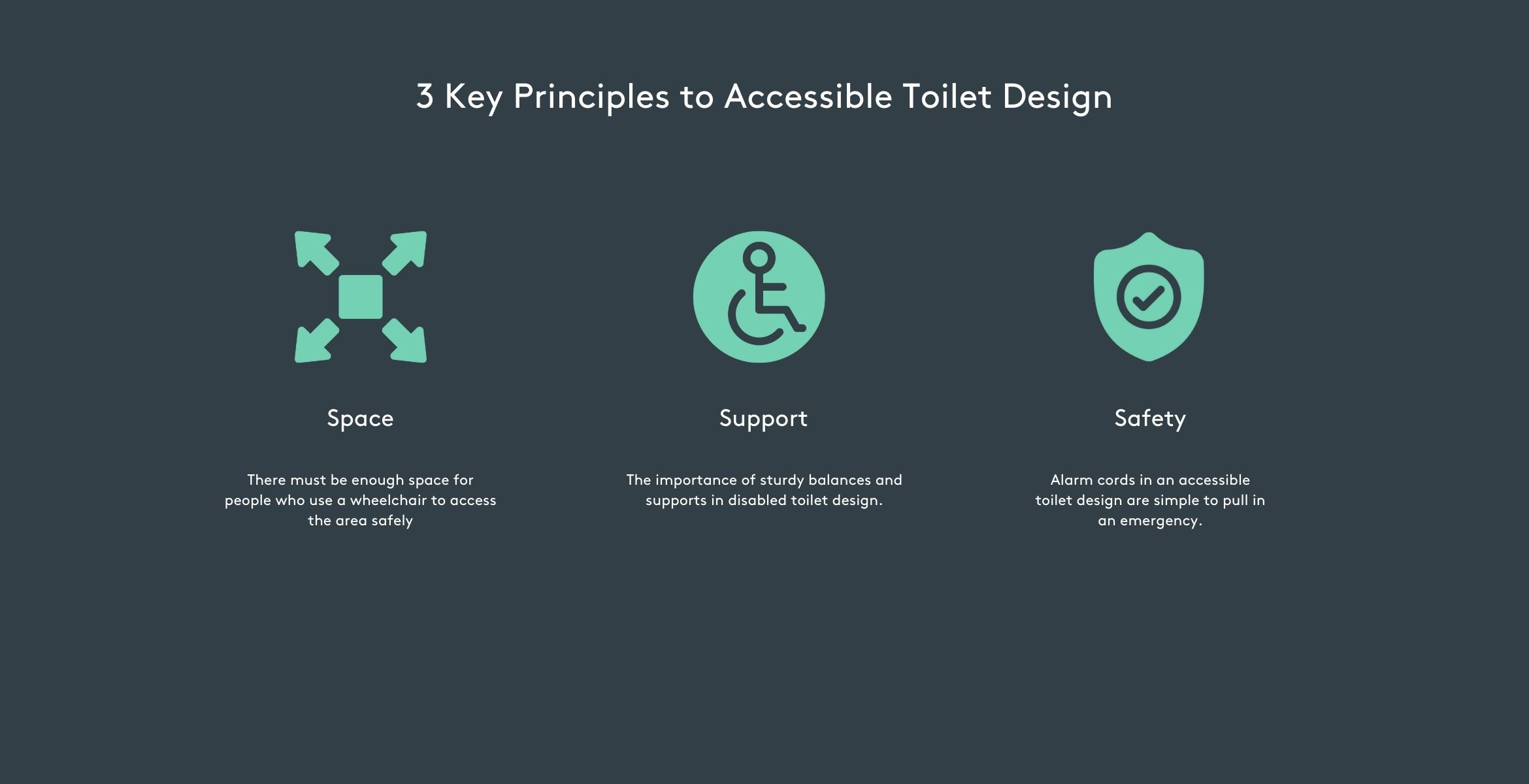The use of inclusive design principles in public and commercial buildings helps to increase levels of accessibility for people with different needs and physical abilities. Broadly speaking, the definition of accessible design is a design standard that reduces the accessibility challenges for people living with disabilities, older adults and those who have mobility requirements.
Accessible toilets are not a new idea, they have a long history and manufacturers of bathroom equipment often take an inclusive design approach – that makes their toilets, fixtures or fittings more useful for people of all abilities. Accessible toilets can also be seen in many private residences and care facilities.

While it may be possible to interact with standard bathroom designs, some of the common accessibility issues for people using a standard toilet include the following:
In most cases, accessible toilet design is not only desirable – but it is also a legal requirement. Under the Equality Act 2010, businesses must make adjustments to help people living with disabilities better use their bathroom facilities. This is usually through the use of specially designed products that use universal design principles.
The accessibility requirements of a built environment can be difficult for a business to understand, especially if such design systems are not a part of the core of their day-to-day work. However, as leading installers of inclusive design washrooms – we are well-placed to illuminate some of the basic principles of the practice.
Our work takes us all over the UK, delivering first-class accessible toilet designs for many businesses and organisations across a variety of sectors. Please feel free to get in touch with us today if you have a bathroom or washroom project to complete.
There are many design examples that you can expect to see in various public places across the UK – including offices, gyms, leisure facilities, hospitals, schools, transport hubs and plenty of other settings. Accessible toilets are usually unisex by design, as they tend to have less frequent use than standard sex-segregated bathrooms.
The designs for products that you can typically see in a disabled toilet will normally depend on their location. For example, gyms and hotels are more likely to feature wet rooms and accessible walk-in showers or walk-in baths. Contrastingly, you usually do not need such features in an office – so they are much less common.
While there are many permutations within accessible toilet designs and plenty of washroom design systems, the following principles remain the same throughout:

Most accessible toilet design examples operate on these basic principles, but there is a degree of flexibility within this – depending on the nature of the space.
Other equipment may include a transfer bench, which can help people to move from a toilet to their wheelchair. Transfer benches are also useful in changing rooms for gyms and swimming pools.
While people using wheelchairs will be more able to use an accessible toilet, it is also important to cater to people with limited sight. Braille signage and grip support on the floor can help people who live with reduced vision to comfortably use the toilet.
Another issue is that some people will require the use of a toilet but with the help of another person, such as an occupational therapist or carer. In this case, well-sized bathroom systems or even more important.
Many businesses find the principles of inclusive design intimidating and can worry about not providing the right facilities. However, the key to accessible toilet design is simply awareness. Educating staff and building managers can promote knowledge of the standards that people living with disabilities have a legal right to expect.
As industry-leading providers of inclusive principles in a wide range of washroom and bathroom design systems, we understand the need for sensitive and effective easy-access toilets. If you have an installation to complete that incorporates the key principles of accessible toilet design please feel free to get in touch with us today.